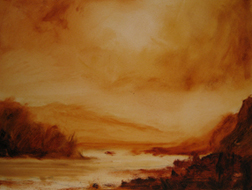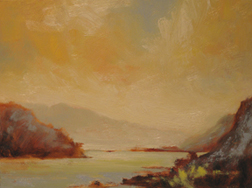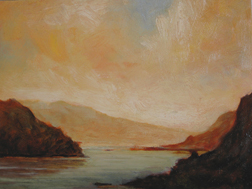Painters use this method to build up multiple layers of paint and medium to achieve some desired visual effects. Titian, Rembrandt and Rubens are among the great painters who constructed oil paintings with the simple technique of applying three distinct layers:

A dark transparent initial layer made from one or a few colors that relate closely to each other, such as the Gamblin Transparent Earth Colors. These colors can be used to block in (draw in) the painting. We recommend contemporary painters use Gamsol odorless mineral spirits and a small amount of Galkyd Lite to thin this layer.

A middle layer made from opaque colors, including the lightest values in the painting (Radiant Colors or a tint of Umber, Terre Verte or Portland Greys would be useful for this layer). Consider using Galkyd or Galkyd Lite thinned with approximately 10 – 20% Gamsol.

A final glaze layer that modifies the opaque colors and makes the surface very rich. Consider using Galkyd without thinning for an enamel-like finish or Galkyd Lite for lighter glazes. An opaque glaze layer is called a “scumble.” Because of its transparency, Zinc Whiteis the best white to create this effect. Also, pure hue “highlights” can be added to the top of the painting.
Paintings built in this manner follow the “fat over lean” rule. ALL PAINTING MEDIUMS ARE CONSIDERED FAT so use Galkyds thinned with Gamsol in the under layers and more painting medium in the upper layers.
For painters concerned about using oil rich colors, consider this visual key: Artists’ grade oil paints that look shiny are fat. Artists’ grade oil colors that look more matte are lean.
When using tints to build the middle layer, consider the layer lean because all Gamblin Artists’ Whites are lean.
This simple system can be organized differently depending on whether painters prefer to build their paintings from dark to light (Leonardo) or light to dark (Rubens). Painters who prefer not to tone the ground will make brighter paintings by applying:
- Thick opaque under painting as an initial layer
- Thin transparent glazes to modify that under painting
Painters can also use the Indirect method by applying many glazes of only transparent colors over a drawing or a grisaille. The traditional drawing colors are medium brown (Umber), earth green (Terre Verte) or warm medium grey.
